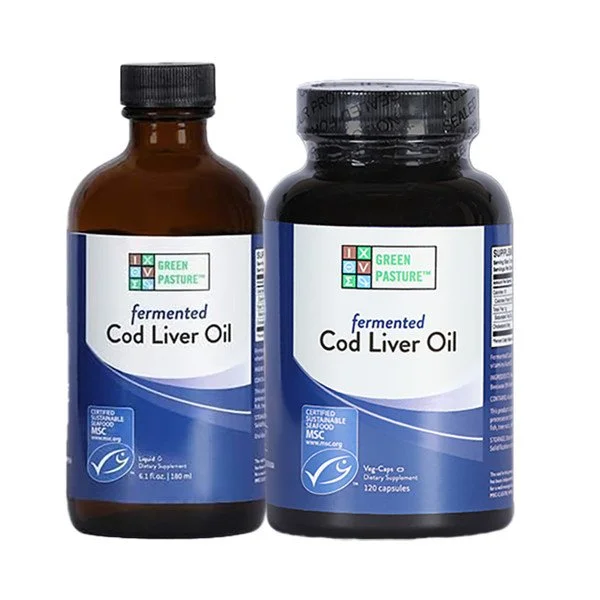Vitamin D Levels in Pregnancy and Lactation
How much Vitamin D do mothers need for the best health outcomes? This can be a difficult question to answer. You will find different recommendations concerning dosage and how to achieve the right blood levels through sunlight exposure, foods, and/or supplementation. In this article, my goal is to give information based on research so that you can make the best decision for you and your pregnancy and breastfeeding journey.
In traditional societies with little to no tooth decay, foods high in vitamin D were always consumed. On average, 1,000-4,000iu vitamin D was consumed daily along with 4,000-20,000 iu vitamin A. In addition, high pigmented societies with no sun exposure, like the Inuit, have been studied and have no vitamin D deficiencies. This is because they consistently consumed animal foods that contain saturated fat and are high in vitamin D.
Foods High in Vitamin D
Fatty Fish:
Salmon (3.5 oz): Approximately 570 IU
Mackerel (3.5 oz): Approximately 360 IU
Sardines (3.5 oz, canned): Approximately 270 IU
Cod Liver Oil:
1 tablespoon: Approximately 1,360 IU
1 Teaspoon High Vitamin Cod Liver Oil by Green Pastures: 1950iu
Egg Yolks:
1 large egg yolk: Approximately 40 IU
Fortified Foods:
Fortified Orange Juice (1 cup): Approximately 137 IU
Fortified Cereals (1 serving): Varies widely, check product labels
Fortified Plant-Based Milk Alternatives (1 cup): Varies, check product labels
Raw Milk:
1 cup: Approximately 98 IU
Mushrooms:
Amount varies, especially when exposed to sunlight during growth.
Beef Liver:
3.5 oz: Approximately 49 IU
These values are approximations and can vary based on factors like the type of fish, cooking methods, and fortification levels in processed foods. It's important to maintain a balanced diet and consider consulting with a healthcare provider for personalized guidance on meeting your specific nutritional needs during pregnancy. If necessary, they may recommend Vitamin D supplements to ensure adequate intake.
The latest research has shown that levels of vitamin D below 50 results in vitamin D not transferring through breast milk. Infants require about 400iu per day and studies have shown mothers needed about 6400iu of vitamin D per day for this amount to transfer into their breast milk. This is probably why in traditional societies lactating women consumed a specific diet high in vitamin D. Low levels of vitamin D are probably caused by inadequate intake of foods high in vitamin D and little sun exposure in our modern lifestyles.
Adequate levels of vitamin D has shown to:
Be vital for Fetal Bone Development: Vitamin D is crucial for the development of your baby's bones and teeth. It helps in the absorption of calcium and phosphorus, essential for strong and healthy bones.
Support Your Immune System: Adequate Vitamin D levels support a robust immune system for both you and your baby, reducing the risk of infections and illnesses.
Reduce Risk of Preterm Birth: Studies suggest that maintaining optimal Vitamin D levels may lower the risk of preterm labor, a significant concern during pregnancy.
Maternal Health: Vitamin D is essential for maintaining your bone health, reducing the risk of complications such as osteoporosis post-pregnancy.
Improved metabolic health: Vitamin D is stored in fat stores. If a person is overweight, the adipose tissue is like a sink that holds the vitamin D. Thinner people have more vitamin D circulating in their blood.
Improve mental health: Research has shown that those with adequate vitamin D levels are less likely to experience depression and anxiety.
Prevent rickets in infants: If a mother is vitamin D deficient, her breast milk is likely to be vitamin D deficient, and thus her child is likely to be deficient. For this reason, it is vital a breastfeeding mother reach her vitamin D level goals for her infant’s health, especially if they have minimal sun exposure.
Defining adequate levels of vitamin D has varied over time. It is generally thought that a level of at least 50 is the minimum for lactating mothers, and that 50-80 is optimal for all adults.
“Most cells have vitamin D receptors. The consequences of vitamin D deficiency for organs other than bone are not fully known but may include impaired immunity, increased autoimmunity, myopathy, diabetes mellitus, and an increased risk of colon, breast, and prostate cancers. Higher vitamin D levels have also been associated with increased longevity. Thus, an optimal vitamin D level might depend on the health outcome in question.”
To increase your vitamin D levels, the following is recommended:
Sun Exposure: When exposed to sunlight, the precursor of cholesterol in our skin absorbs ultraviolet light which produces vitamin D. Use the D-Minder app to know how to safely expose yourself to sunlight at the right time of day and know how many ius you may be making during that sun exposure. Consider eliminating seed oils from your diet to reduce the rate of sunburn. Always know that it is not required to be exposed to the sun to have adequate vitamin D stores. Also remember you can never reach toxic levels of vitamin D from sun exposure.
Supplement with Vitamin D to reach your serum vitamin D goals. It is likely that 5000iu is safe for those who are deficient and should probably be supplemented for at least 12 weeks to see an increase in serum levels. Some research has shown that synthetic vitamin D without co-factors like vitamin A and K acts like a hormone in the body and may have negative side effects. Consume foods high in vitamin D, as listed above, to reach your vitamin D intake goals.
Consume cod liver oil as it is a super food with the most vitamin D out of any food that can be consumed. It also contains co-factors needed for proper absorption. Exact amount of vitamin D in cod liver oil varies unless the supplement is fortified with synthetic vitamin D, which is not recommended. Determine your dosage based on the amount of vitamin D in the cod liver oil you are purchasing. It is likely taking it with dairy products, like butter oil, increases absorption of the vitamin D in the cod liver oil.
If you plan to take Green Pasture Fermented Cod Liver Oil, 1 teaspoon (or 10 capsules) would likely contain adequate levels to meet your daily needs. Always do your own research to determine what you are comfortable with. Note that some cod liver oil brands do not contain high amounts of vitamin D thus, you would have to take a lot of cod liver oil to reach your goals. Plan accordingly.
Apply topical vitamin D cream as some studies show that topical application of vitamin D can greatly increase vitamin D levels.
Eliminate seed oils from your diet because they interfere with your production of vitamin D.
If you are currently overweight, focus on your metabolic health and increasing your metabolism. How to Heal Your Metabolism is a great resource for more information on this.
If you currently have adequate vitamin D levels, it is likely you need 1500-4000iu daily to maintain your levels. If you are overweight, talk to your care provider as 2-3x that may be necessary to maintain your optimal vitamin D levels.
There is some research that “Maintenance of a 30 to 32 ng/mL serum level requires approximately 2,200 to 3,000 IU/d of vitamin D from all sources, including ultraviolet light exposure, food, and supplements.” Thus, it is very likely you will need more than this if you want to maintain levels of 50 or higher during your breastfeeding journey. “Intakes of at least 4,000 IU daily from all sources would be needed to maintain 25(OH)D levels of 40 to 60 ng/mL. Practically speaking, supplements of 2,000 IU daily plus some sun exposure would probably be required to maintain a 25(OH)D level of 40 to 60 ng/mL year round.23 Vitamin D intoxication with renal stones and hypercalcemia may be observed when serum levels of 25(OH)D are greater than 150 ng/mL (374 nmol/L). For a good margin of safety, levels greater than 100 ng/mL should probably be avoided.”
In conclusion, consuming at least 4000iu vitamin D daily is probably beneficial for all women who are pregnant, could become pregnant, or breastfeeding. The lifestyle that traditional societies lived to maintain health and adequate vitamin D levels has now shown to be true through modern day research. If you are unsure of your current vitamin D levels, talk to your midwife about testing now and in the future!
Disclaimer:
This article provides general information and is not a substitute for professional medical advice. Consult your healthcare provider for personalized guidance based on your specific health needs
For further information and to take a deep dive into Vitamin D levels, check out these resources:
Vitamin D by Dr Holick: https://www.youtube.com/watch?v=NuWC2d0mTbo&t=0s
23 Surprising Benefits of Vitamin D: https://www.youtube.com/watch?v=9IXH3ptoyrE&t=0s
The 5 Minute Vitamin D Talk by Dr Mason: https://www.youtube.com/watch?v=NVqNO8rgYKk&t=0s
About the Author:
Bethany Stricker is a traditional midwife that is licensed in the state of Texas and is passionate about families thriving during their pregnancy, birth, and beyond! She holds to traditional ways backed by modern research. For more information about her, check out her bio here and services offered here.
References:
Cure Tooth Decay by Ramiel Nagel, Dentist
Cod Liver Oil Basics: https://www.westonaprice.org/health-topics/cod-liver-oil/cod-liver-oil-basics-and-recommendations/#gsc.tab=0
Maternal vs Infant Vitamin D Supplementation: https://www.ncbi.nlm.nih.gov/pmc/articles/PMC4586731/
https://www.westonaprice.org/podcast/how-to-have-a-healthy-pregnancy/#gsc.tab=0
Is Vitamin D Important in Anxiety and Depression? https://www.ncbi.nlm.nih.gov/pmc/articles/PMC9468237/#:~:text=Low%20vitamin%20D%20levels%20are,planning%20of%20these%20mood%20disorders.
Breastfeeding, Vitamin D, Your Baby and You: https://llli.org/breastfeeding-info/vitamin-d/
Vitamin D Deficiency in Adults: When to Test and How to Treat: https://www.ncbi.nlm.nih.gov/pmc/articles/PMC2912737/#:~:text=What%20Is%20an%20Optimal%2025,%3C20%20ng%2FmL).
Levels of Vitamin A and D in Fermented Cod Liver Oil: https://www.greenpasture.org/nutrition/fat-soluble-vitamins/
How I Treat Vitamin D Deficiency by Dr Khan and Dr Fabian: https://www.ncbi.nlm.nih.gov/pmc/articles/PMC2835491/
Topical Delivery of Vitamin D: https://www.ncbi.nlm.nih.gov/pmc/articles/PMC3976443/


